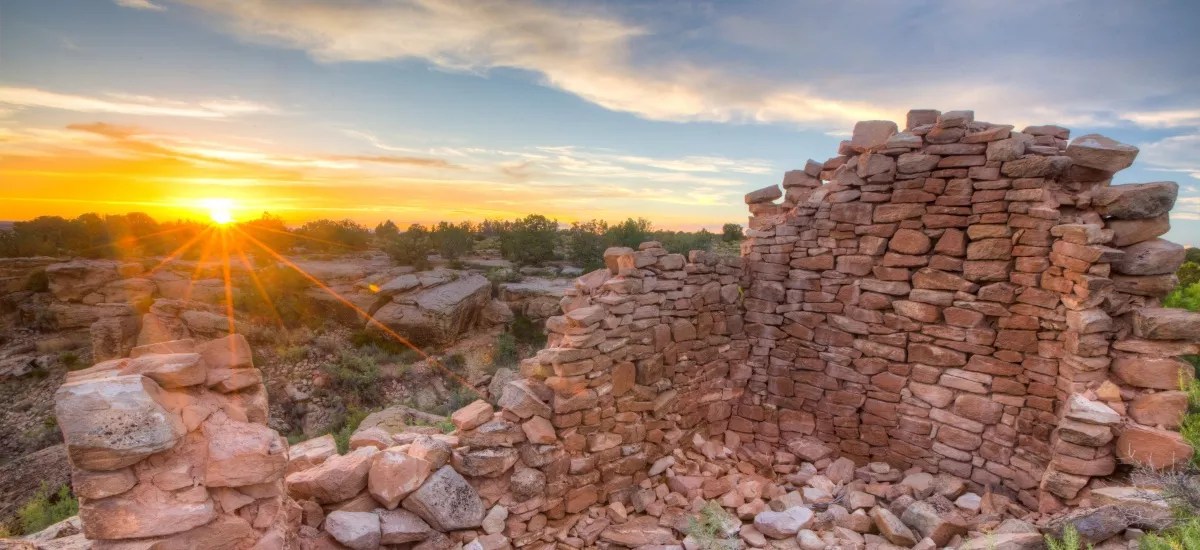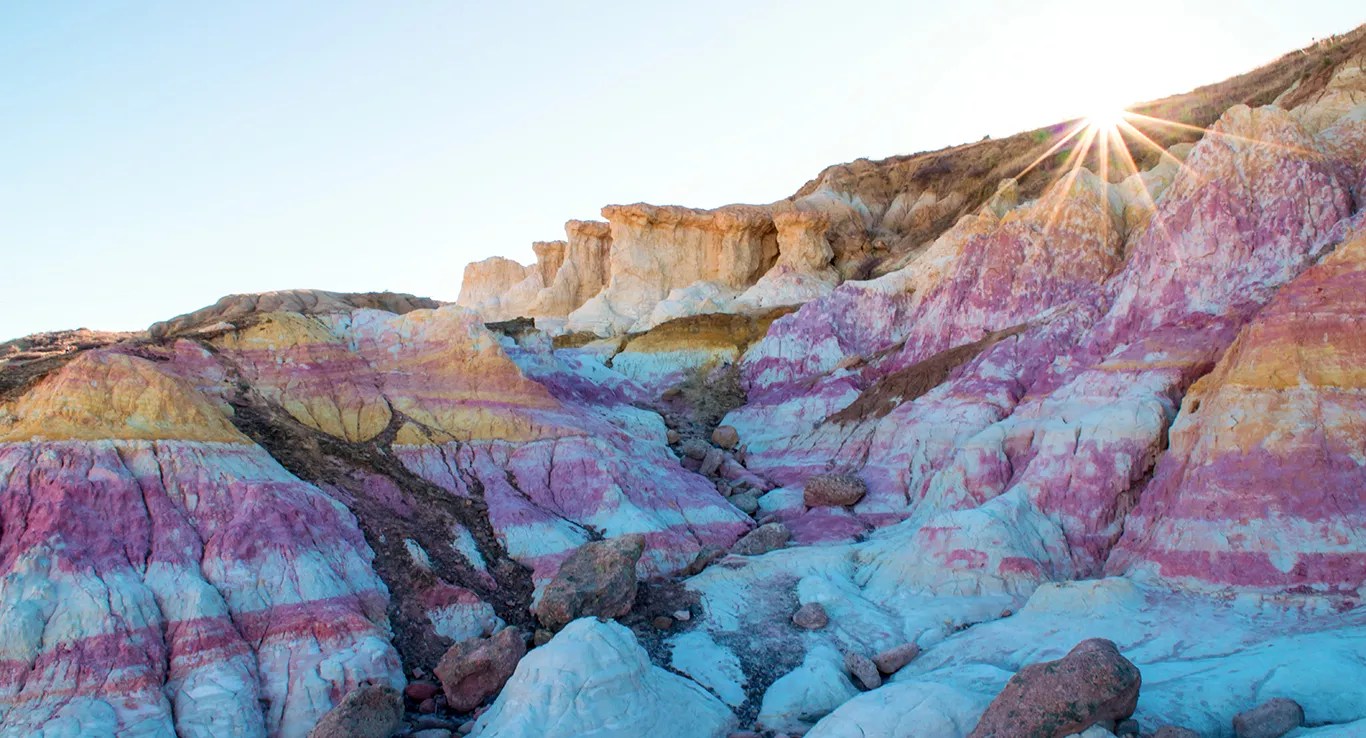
Caleb Backus

Audio By Carbonatix
As Westword‘s first marijuana critic, I didn’t need to head to the mountains to explore the high country. These days, though, I have a new career renting vintage and modern campervans from my company, Rocky Mountain Campervans, and spend my days detailing vehicles and advising tourists on some of the not-so-common places they should check out.
If we all have to stay close to home this summer, we’re damn lucky to call Colorado home. Here are ten of my favorite places to recommend…and revisit myself.
Florissant Fossil Beds National Monument
Get your hard-core geology geek on just two hours from Denver. The Florissant Fossil Beds National Monument is loaded with amazing fossilized fish, insects and – most impressive – trunks of coastal redwoods that thrived in Colorado’s ancient coastal environment about 32 million years ago. Although it’s just west of Colorado Springs, Florissant seems to fly under the radar of a lot of locals we’ve sent out lately, and every time we’ve ever been there as a family, the place is empty. While the visitors’ center that holds the best fossil specimens is closed right now, the self-guided tours of the area and simple, easy hikes are open and easy to access. Nearby Riverside Campground is a good option if you don’t want to make the drive back to Denver. Find out more here.
Black Canyon of the Gunnison
Want to figure out if you have vertigo? Black Canyon of the Gunnison is the place. With nearly vertical walls carved out by the raging Gunnison River below, it’s not uncommon to see people white-knuckling the handrails at viewing stations at the South Rim visitors’ center or moms holding their toddlers extra-tight by the shirt collar. Hiking junkies can get their kicks doing treks into the canyon, but rim trails are perfectly acceptable and have some killer views of places like Painted Wall, a 2,250-foot sheer cliff that is the tallest in the state. Campgrounds at the South Rim are currently open, but reservations are suggested.
St. Elmo Ghost Town/Mt. Princeton
Colorado is home to dozens of ghost towns and old mining camps, but you’d be hard-pressed to find one more Hollywood-esque than St. Elmo, tucked into the Sawatch range about twenty miles from Buena Vista. The abandoned buildings date back to the 1880s, when the town was a booming hub for miners working in nearly 150 nearby mines, large and small. Pack a picnic lunch (or grab some food at Brown Dog Coffee in Buena Vista before heading out), and grub down by the river. Beware of the overly-friendly chipmunks that will rob you blind. If you stay at Mt. Princeton Campground, you can spend the evening soaking at Mt. Princeton Hot Springs. Find out more about Mt. Princeton at fs.usda.gov.
McInnis Canyons National Conservation Area
Why go all the way to Moab to see sandstone arches and natural caverns? Utah doesn’t want you there right now, anyway (look it up). Instead, head to McInnis Canyons – Colorado’s own (slightly smaller) version of Arches National Park. McInnis has plenty of naturally carved stone arches and open space to explore, without the massive crowds of Arches. Camping in the park at Castle Rocks is pretty choice; if spots there are full, try to reserve one of the individual sites scattered through the park the BLM website.

BLM
Canyons of the Ancients
While nearby Mesa Verde (deservedly) gets all the attention for its ancient cliff dwellings, we prefer the quieter and less-traveled Canyons of the Ancients just west of Cortez. There are more than 6,000 structures and sites in the park that date back to Native American settlement of the area from about 750 A.D. until sometime in the 1300s. While currently closed, the Anasazi Heritage Center at the visitor center has a number of artifacts found since the area’s first excavation in the 1920s. All camping in the park is dispersed, so there are no designated camping areas; you can pitch your tent (or pop your Volkswagen top) anywhere in the park as long as you’re 300 feet from any of the ancient sites. Learn more at blm.gov.
Creede
Creede is the type of place that Clark Griswold would detour hours out of the way just to visit. It’s where the coward Robert Ford was shot dead in 1892 in an act of vengeance for Ford’s killing of famed outlaw Jesse James. It’s also home to the world’s largest fork. Really. The real focus of the town, though, is its rich mining history. The Bachelor Loop is a jaw-droppingly beautiful twenty-mile jaunt around dozens of abandoned mines in various states of ruin; it’s best done in a 4×4 vehicle. For a more tame and kitschy experience, head to the Underground Mining Museum and listen to kooky old miners detail how miserable conditions were. Find out more about Creede here.
Bishop Castle
It’s hard to describe Bishop Castle succinctly. On the surface, it’s one man’s epic, forty-year construction project that’s part madhouse and part work of art. Dig deeper and you’ll find that it’s also a huge “fuck you” from that man to the U.S. government regarding the use of public lands. Jim Bishop built his palace in Rye out of rocks he proudly took from the nearby national forest. Possible madness aside, his masonry and ironwork are astounding, and the folk-art building is so uniquely Colorado that we tell all of our renters going to this area west of Colorado Springs that this is a must-stop attraction. If you’re lucky, you might even get to meet Bishop and listen to one of his anti-government rants. Find out more at bishopcastle.org.

El Paso County
Paint Mines Interpretive Park
If Meow Wolf could design a million-year-old natural wonder, this would be it. The landscape of Paint Mines Interpretive Park is something right out of Alice in Wonderland, and a real trip to hike around near sunset or sunrise, when the psychedelic yellows, reds, purples and whites of the towering stone spires and formations really pop. We don’t send renters east of Denver much, but this spot, about twenty miles from Colorado Springs, is worth the detour. Just remember that despite any urges you may experience when visiting this place, mushrooms are decriminalized only in Denver, and smoking weed in public places in Colorado will still get you in trouble. Find out more about Paint Mines Interpretive Park on the El Paso County website.
Golden Gate Canyon State Park
Not much of a camper? Just want to dip your toes into the whole hiking and outdoors thing? Golden Gate Canyon is a great place to start. While the park just west of Golden is busy because of its proximity to Denver, it has lots of developed camping with showers and bathrooms that’s perfect for newbies and people who haven’t been out in the woods in a while. Hiking trails are easy and offer great views of nearby rock formations and local wildlife; our renters have sighted a pretty active mule deer herd and the occasional bear. The spot is great for day-tripping, too: close enough that you can get home for dinner, but far enough away to feel like you actually made it out of the city and into the mountains. Learn more at cpw.state.co.us/placestogo/parks/goldengatecanyon.
Mount Falcon Park
Sure, the hiking here is great, but the real centerpiece is the long-abandoned, burned-down ruins of a mansion that once stood overlooking Denver. It was built by John Brisban Walker, who owned both Mount Falcon and nearby Mount Morrison (and Red Rocks) in the early 1900s. He envisioned this place as a summer retreat for U.S. presidents, but life had other plans for Walker, who lost his wife and watched his home burn to the ground all within a few years. He eventually left Colorado altogether, but not before selling Red Rocks to the City of Denver for around $55,000. Walker died broke in New York City in the 1930s. Visit jeffco.us for more information.